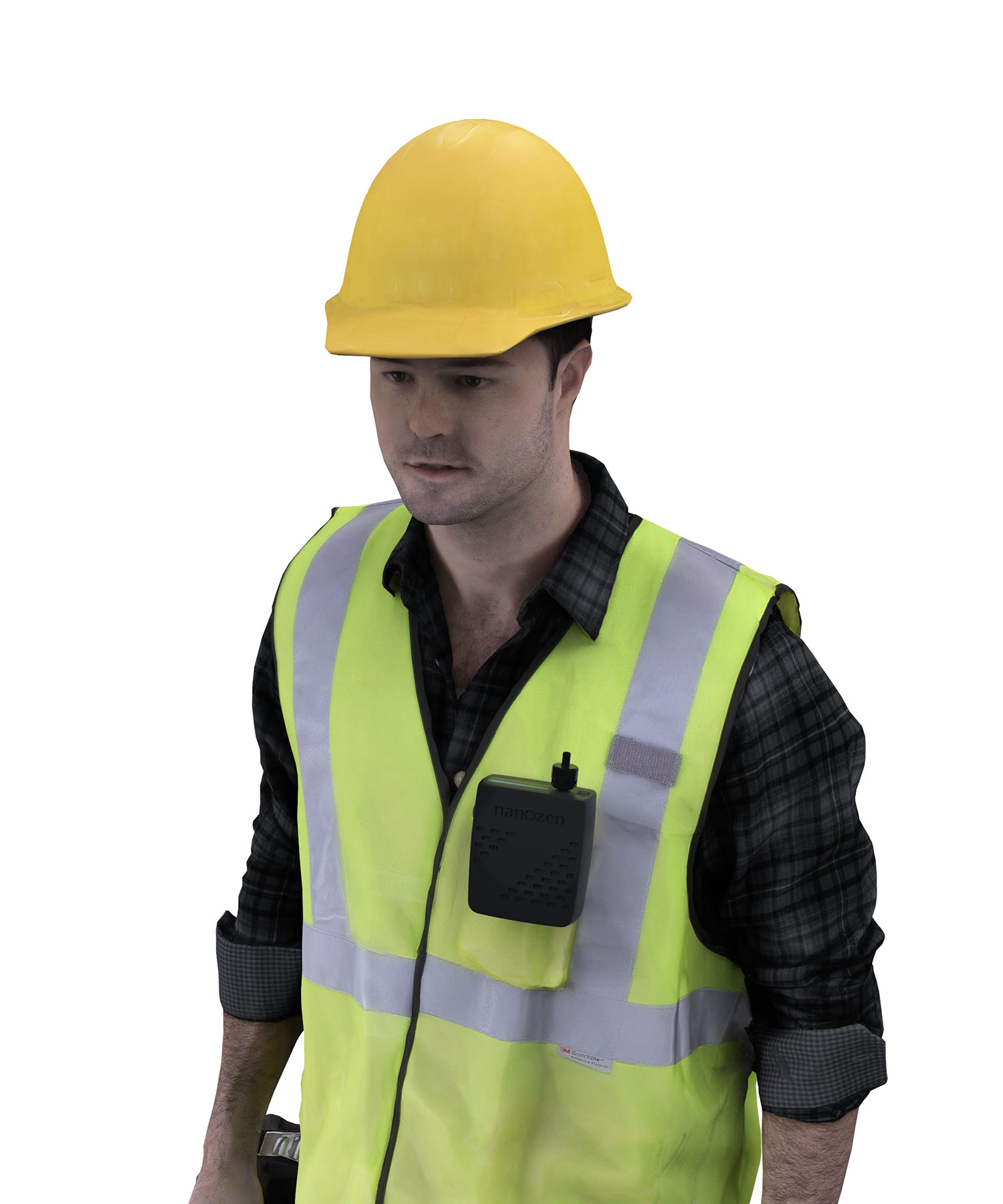
Know the Air you Breathe
Introducing DustCount
Nanozen’s DustCount family of products provide the advanced features required to support real-time aerosol monitoring in a lightweight, wearable, easy to use package. Occupational Health and Safety Specialist can easily program the DustCount to read real-time mass concentration, particle concentration, and size distribution to determine the exposure level in the air immediately. Whether it is mg/m3 in Mining or ng/m3 in Pharma, Nanozen monitor is right for your needs. With the built-in filter cassette, Hygienists can also have composition analysed at an independant lab without the need for an external pump and filter.
Hygienists, OHS, and HSE specialists have used DustCount real-time data to…
- discuss aerosol exposure issues with senior management and production engineers,
- verify if Containment systems and manufacturing processes are working effectively,
- graphically demonstrate dangerous situations to workers for training and reinforcement,
- lower costs by focusing on problem areas identified by real-time air measurements.
Particle Monitoring Peer-Reviewed Study
A Health Canada report examines talcum powder applications and studies the efficacy of real-time particle monitors for monitoring and mitigating exposure risks.
Solutions for All Industries
Our DustCount products are utilized globally today across a broad range of industries and applications. Whether you need a PM 2.5, respirable/PM4, PM 10, or Total Inhalable monitor, or Intrinsic safe certification, Nanozen has a solution for you. Click the icons below to learn more.

Mining
Silica and/or coal particle can cause long-term health issues for workers such as cancer, pneumoconiosis and coal workers’ pneumoconiosis.

Construction
Many activities in construction can cause particle creation including demolition, excavation, drilling, cutting concrete , sandblasting, aggregate transportation and woodwork.

Environmental
Many countries, states/provinces and local governments around the world have implemented air quality standards for protection of their citizens as well as the surrounding environment.

Pharmaceutical
API’s and HPAPI’s have extremely low OELS that require a highly sensitive monitor like DustCount to detect. Pharma Containment systems must be tested and monitored for leaks at their OEB level according to ISPE rules and Operators must be protected from over-exposure. Each day of delay in testing using the old non-real-time method could cost millions of $$ in drug production.
Please see the Services page for more information on Nanozen’s new Containment Verification Service using its DustCount 900P.

Oil & Gas
Particle can be generated during well drilling or fracking, product delivery, refining and even oilsands operations and can impact the long-term health of workers at these sites.

Factories
Silica particle occurs in manufacturing plants producing cement, glass, stone, brick, ceramics, porcelain or when using sand blasting methods.

Foundries
Dangerous silica particle can be generated in a variety of foundry activities including casting, pouring, de-molding, cast finishing, sand blasting, and cleaning the floors.

Forestry / Wildfire
The smoke and airborne particulate from widlfires brings dangerous health risks for workers in the smoke-shadow that don’t normally wear Personal Protection Equipment on the job.

Nanozen’s DustCount is a powerful and easy to use tool that helped pinpoint where our real silica issues lay. The real-time data we collected was essential to show process errors that would have otherwise resulted in $300,000 in blast unit repairs.
Brian Harms, P.E., CIH
Project Manager, TRC Environmental Corp.
Teck Case Study - Real-Time Monitoring Inside Haul Truck Cabs
Learn how Teck is using Nanozen’s cutting-edge particle monitoring technology and making data-driven decisions to reduce employee particle exposure, and improve occupational health and safety.